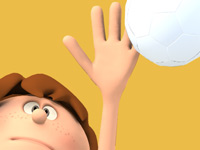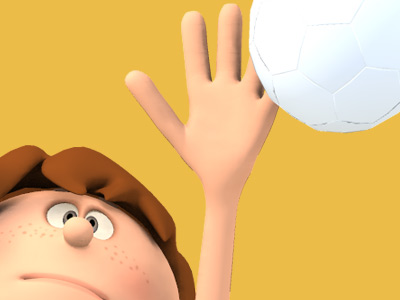Volleyball Attack
The attack, also known as the spike, is usually the third contact a team makes with the ball. The object of attacking is to handle the ball so that it lands on the opponent's court and cannot be defended. A player makes a series of steps (the "approach"), jumps, and swings at the ball.
Ideally the contact with the ball is made at the apex of the hitter's jump. At the moment of contact, the hitter's arm is fully extended above his or her head and slightly forward, making the highest possible contact while maintaining the ability to deliver a powerful hit. The hitter uses arm swing, wrist snap, and a rapid forward contraction of the entire body to drive the ball. A 'bounce' is a slang term for a very hard/loud spike that follows an almost straight trajectory steeply downward into the opponent's court and bounces very high into the air. A "kill" is the slang term for an attack that is not returned by the other team thus resulting in a point.
Contemporary volleyball comprises a number of attacking techniques:
- Backcourt (or backrow)/pipe attack: an attack performed by a back row player. The player must jump from behind the 3-meter line before making contact with the ball, but may land in front of the 3-meter line.
- Line and Cross-court Shot: refers to whether the ball flies in a straight trajectory parallel to the side lines, or crosses through the court in an angle. A cross-court shot with a very pronounced angle, resulting in the ball landing near the 3-meter line, is called a cut shot.
- Dip/Dink/Tip/Cheat/Dump: the player does not try to make a hit, but touches the ball lightly, so that it lands on an area of the opponent's court that is not being covered by the defense.
- Tool/Wipe/Block-abuse: the player does not try to make a hard spike, but hits the ball so that it touches the opponent's block and then bounces off-court.
- Off-speed hit: the player does not hit the ball hard, reducing its speed and thus confusing the opponent's defense.
- Quick hit/"One": an attack (usually by the middle blocker) where the approach and jump begin before the setter contacts the ball. The set (called a "quick set") is placed only slightly above the net and the ball is struck by the hitter almost immediately after leaving the setter's hands. Quick attacks are often effective because they isolate the middle blocker to be the only blocker on the hit.
- Slide: a variation of the quick hit that uses a low back set. The middle hitter steps around the setter and hits from behind him or her.
- Double quick hit/"Stack"/"Tandem": a variation of quick hit where two hitters, one in front and one behind the setter or both in front of the setter, jump to perform a quick hit at the same time. It can be used to deceive opposite blockers and free a fourth hitter attacking from backcourt, maybe without block at all.
SPORTS

RESOURCES
This article uses material from the Wikipedia article "Volleyball", which is released under the Creative Commons Attribution-Share-Alike License 3.0.
© Stories Preschool. All Rights Reserved.









